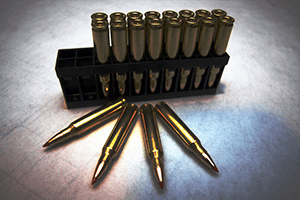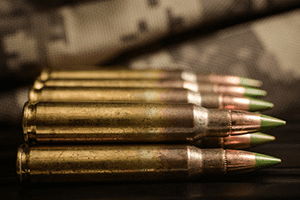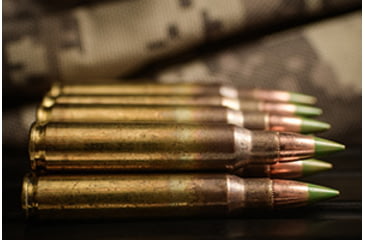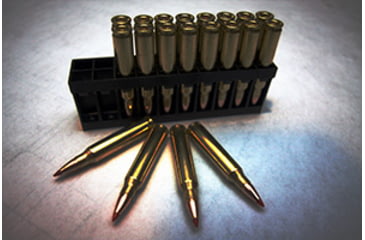There's a lot of confusion regarding the similarities and differences between commercial cartridges and NATO cartridges. The two pairs of cartridges most frequently discussed are .223 Remington and 5.56x45mm NATO (as well as .308 Winchester/7.62x51mm NATO). This guide will help explain the differences between the commercial version of the ammo and its U.S. military cartridge counterparts, as well as which one shooters should use in their rifles and carbines.![]()
223 Remington vs 5.56 NATO

These two cartridges are very similar. Both .223 Rem and 5.56x45mm NATO rounds are firing .224-caliber bullets and have the same case length and external dimensions with nearly identical case capacities. The mil-spec 5.56x45mm NATO ammunition has a different shoulder profile and slightly thicker case wall when compared to the .223 Remington cartridge. This allows for the 5.56 NATO chamber to have a higher pressure, which can increase long-range accuracy and result in higher velocity and feet per second (FPS) of the bullet. The pressure difference is what determines the compatibility of the 5.56 NATO cartridge with certain barrels. According to the Sporting Arms and Ammunition Manufacturers Institute (SAAMI), 5.56x45mm NATO can have a maximum pressure of about 62,000 psi, while .223 Remington has a maximum of 55,000 psi.
Since the 5.56 NATO cartridge has higher chamber pressures than .223 Remington, it's not recommended to fire 5.56mm ammunition through rifles chambered in .223 Remington. Though it's possible to shoot 5.56 NATO in a .223 Remington chamber, since barrels specifically designed for .223 are rated at a lower pressure, 5.56 ammo can damage the integrity of the rifle chamber and eventually cause significant issues. The rifle chamber for 5.56 NATO also has a larger leade than the .223 Remington's shorter-leade rifle chamber. The leade is where the rifling begins in a barrel and is the tapered section of the throat that transitions from the freebore to the rifling. A rifle chambered for 5.56 NATO can safely fire .223 Remington ammo with its longer leade.
.223 Wylde
Many AR-15 rifles and some bolt-actions on the market today have a .223 Wylde chamber. .223 Wylde is not a different type of .223 cartridge but the actual chamber design in certain rifles. The differences mentioned above between 5.56 NATO and .223 Remington also led to differences in accuracy and ballistics between the two cartridges. Bill Wylde developed a chamber that is designed to fire 5.56mm and .223 Remington ammunition safely but shares certain characteristics of the .223 chamber that led to better accuracy when firing 5.56 ammo.
Summing It Up: 223 Remington VS. 5.56mm NATO Ammo
 Even though the commercial cartridges .223 Remington are very similar to their 5.56mm NATO counterparts, their slight differences shouldn't be ignored when choosing which ammo is suited to fire in your rifle. If your rifle is chambered in 5.56x45mm NATO or .223 Wylde, you can safely shoot both .223 Remington and 5.56x45mm NATO in your rifle. If your rifle is chambered in .223 Remington, you can only fire .223 Remington in your rifle. These rules should be followed whether you're shooting full metal jacket (FMJ) rounds, steel penetrator rounds, or polymer rounds, as the bullet weight and type doesn't change the pressure much.
Even though the commercial cartridges .223 Remington are very similar to their 5.56mm NATO counterparts, their slight differences shouldn't be ignored when choosing which ammo is suited to fire in your rifle. If your rifle is chambered in 5.56x45mm NATO or .223 Wylde, you can safely shoot both .223 Remington and 5.56x45mm NATO in your rifle. If your rifle is chambered in .223 Remington, you can only fire .223 Remington in your rifle. These rules should be followed whether you're shooting full metal jacket (FMJ) rounds, steel penetrator rounds, or polymer rounds, as the bullet weight and type doesn't change the pressure much.
If you're looking to make upgrades to your AR15, we have tons of AR15 parts in stock! Everything from complete upper receivers to bolt carrier groups, stocks, and handguards, our team at OpticsPlanet has assembled the best gear and equipment on the market.












